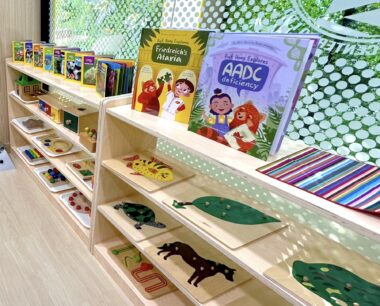Turning real journeys into magical stories for children
Introducing the second installment of our 'Rare Journey' children's book series

My wife, Judy, and I are thrilled to introduce the second book in our children’s series, a journey crafted with love, creativity, and a purpose-driven formula to inspire young minds. After the success of our first book, we knew we’d found a way to captivate children while empowering them. Our second installment deepens the adventure, bringing even more joy and valuable lessons to families everywhere.
Judy and I found that publishing our first book, “Prof. Hong Explores AADC Deficiency,” was a reflective and therapeutic experience. Our life had taken a long and winding detour after we discovered that our daughter, Rylae-Ann, had been born with the rare disease aromatic l-amino acid decarboxylase (AADC) deficiency. However, our journey became much smoother after she received gene therapy. She was reborn and given a new chance at life.
During the process of getting our daughter the treatment she needed, Judy and I went through our own transformation as well.
We learned to transition our routines, schedules, and various approaches to meet our daughter’s needs in what we call a caregiver lifestyle. Our dreams changed, but our memories became even more meaningful. With our life in a more steady place, we knew we had to give back to the rare disease community. We formed a nonprofit organization called Teach RARE to apply our knowledge as educators and caregivers to support families in the rare disease and special needs community.
One of our projects was creating children’s books, which allowed us to raise rare disease awareness while providing an educational resource for parents and teachers. Our first book sold more than 500 copies on Amazon, and we donated books to schools, hospitals, and therapy centers worldwide to help achieve our mission. With the first book completed, we immediately started on our second book, applying the same process.
The heart of our series

The “Rare Journey” children’s book series on display. (Courtesy of Richard E. Poulin III)
Our books follow a rare formula: engaging storytelling, relatable characters, and interactive elements that make learning feel like play. We believe children learn best when immersed in a world that sparks their curiosity and encourages them to explore. We blend imagination and education seamlessly with each page, ensuring every child feels seen, understood, and inspired.
Capturing a true story: The most essential element of our “Rare Journey” series is featuring a real-life story. When children learn that the story is true, the impact is even greater. I knew the perfect person for our second book: Matt Lafleur, a fellow columnist here at Bionews, the parent company of this website. He inspired me on my journey from being a quiet observer to becoming a voice for the rare disease community.
Matt already had a solid outline we worked to mold into an engaging format for children. Each page took some creative leeway but remained true to his story. Following is the formula we continued to use with “Prof. Hong Explores Friedrich’s Ataxia.”
Conceptualizing rare disease for children: Explaining a rare disease to children can be complex. Even I had a tough time understanding AADC deficiency when I first learned about it. Pictures do a fantastic job of simplifying scientific ideas and making them accessible to young readers.
That’s why we had to get illustrator Anna Lomakina for our second book. After giving Anna the story and storyboard, she worked her magic. She has a unique talent for creatively representing the story while ensuring that each page remains true to its meaning. Each illustration is truly a work of art and promotes imagination.
Incorporating education: The final core feature of our series is incorporating learning and educational facts. We wanted the book to be a learning experience for children that promotes awareness and inclusion and inspires them to become change-makers.
We also knew our books would be a resource for teachers and parents. At the end of each book, we include extension activities that teachers and parents can use to take the learning further. That’s especially beneficial for homeschooling.
A series that grows with your child
We aim to create a collection of books that evolve alongside your child, offering fresh insights and deeper engagement with every new release. By using the same trusted formula in each book — relatable experiences, emotional intelligence, and interactive storytelling — we ensure that children continue to connect with the stories as they grow.
As we work to get both books into the hands of more children, we’re already working on our third book. As with all the books in the series, the proceeds will go to supporting the rare disease community.
We invite you to embark on this adventure with us. Whether you’re reading with your child at bedtime, in the classroom, or during a quiet afternoon, this book is a memorable addition to your collection. Join us in nurturing curiosity, resilience, and a love for learning — one book at a time.
Note: AADC News is strictly a news and information website about the disease. It does not provide medical advice, diagnosis, or treatment. This content is not intended to be a substitute for professional medical advice, diagnosis, or treatment. Always seek the advice of your physician or other qualified health provider with any questions you may have regarding a medical condition. Never disregard professional medical advice or delay in seeking it because of something you have read on this website. The opinions expressed in this column are not those of AADC News or its parent company, Bionews, and are intended to spark discussion about issues pertaining to aromatic l-amino acid decarboxylase deficiency.






Leave a comment
Fill in the required fields to post. Your email address will not be published.